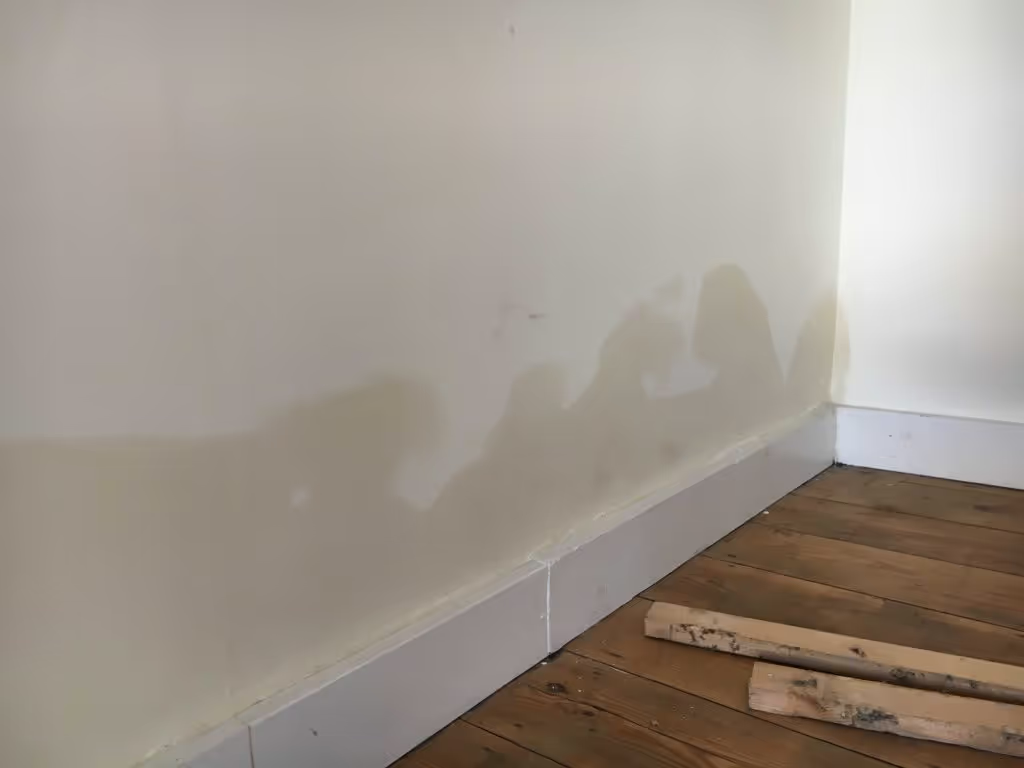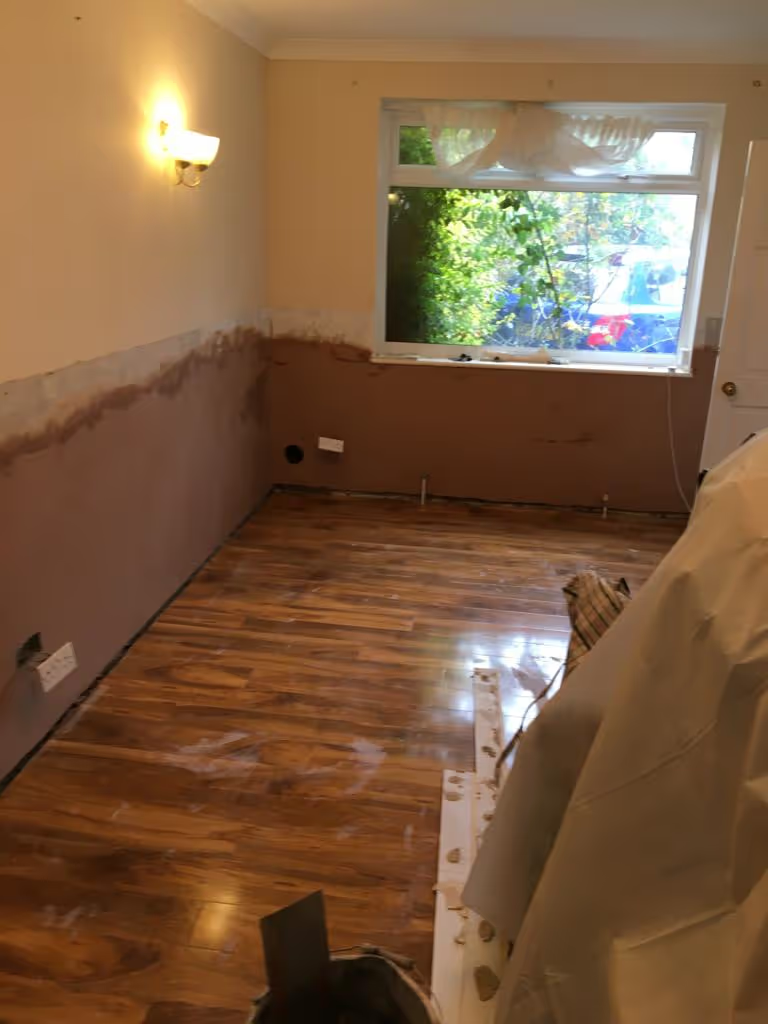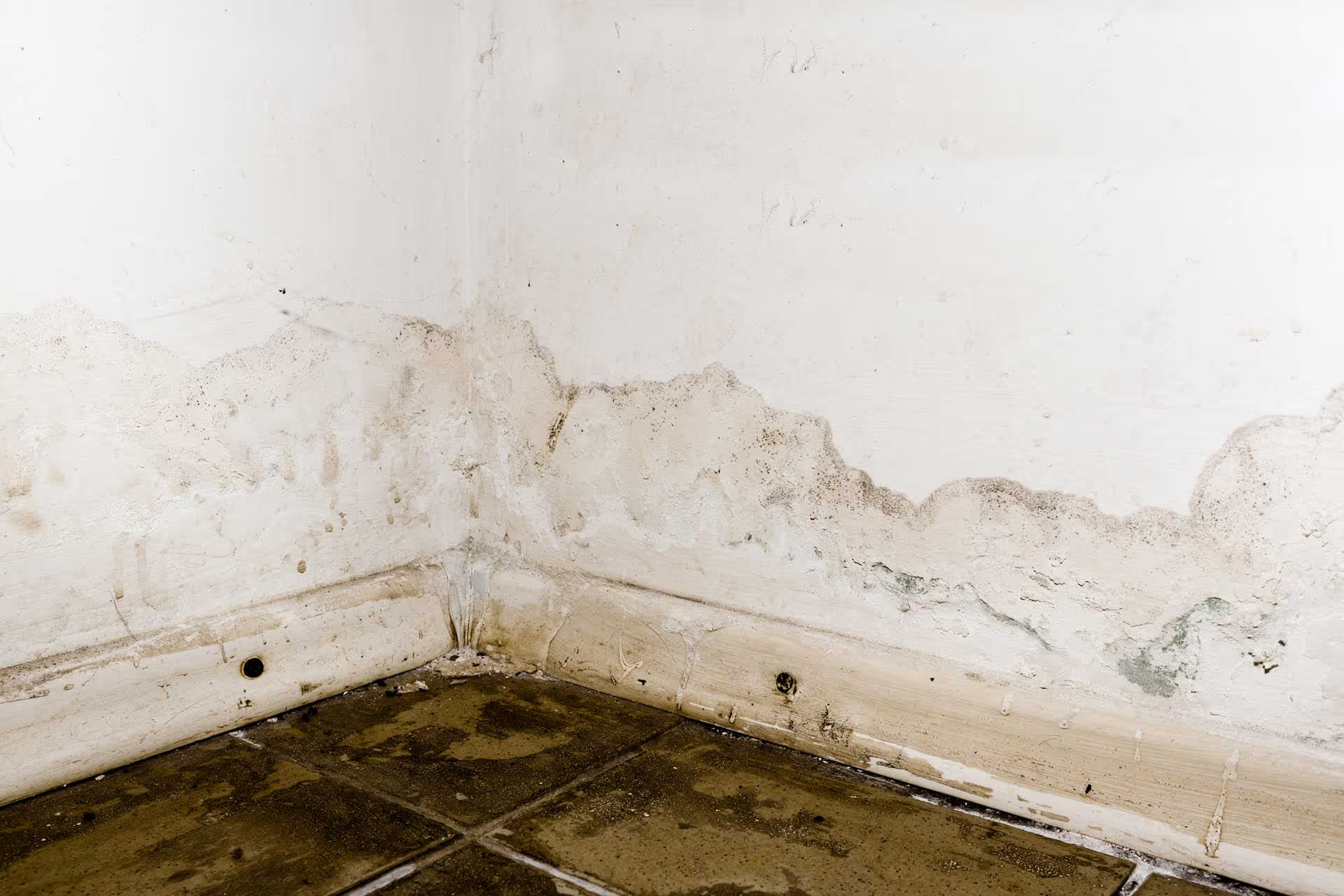
Damp Treatment

Penetrating water is the most common cause for damp related issues in the UK, penetrating damp is classed as any water that finds its way inside from the outside.
It occurs at all levels of the building but is more prevalent higher up and on south west facing walls. Overflowing gutters, missing roof tiles, downspouts, leaking pipes, badly fitting windows or doors and damaged pointing, cladding, flashing or render are all sources of penetrating damp.
What are the symptoms of penetrating damp?
You’d think it would be fairly easy to locate the ingress of water into your property but the problem is that it can often be weeks or months before any problems appear. Typical signs of penetrating damp are:
- growing circles of damp on walls or ceilings
- blotchy patches on walls
- wet and crumbly plaster
- signs of spores or mildew
- drips and puddles.
Rising Damp is simply, water from the ground that enters a structure by capillary action. Water that enters or affects a building through any other route can move about in various ways but is not rising damp.
Rising damp is a commonly encountered problem in some types of building, however it is often misdiagnosed. It is important that the investigations into dampness are undertaken by a competent surveyor who can recognise and understand the problem.
Decayed skirting boards, crumbling or salt stained plaster, discolouration and staining, decayed timber floors, peeling paint and wallpaper are all common when walls are affected by rising damp. These defects are not always evident but when they are, a specialist inspection is always recommended.


If you’ve been searching online for information on rising damp, you’re sure to have come across claims that rising damp is a myth. Although these assertions are not widely accepted (and are indeed rejected by professional organisations such as the Building Research Establishment), they can be persuasive. Advocates of the ‘rising damp as myth’ viewpoint take the view that rising damp is a fiction invented by the damp proofing industry, and one designed to separate customers from their money.
Because rising damp affects the base of your home’s ground floor walls, it has the potential to weaken their structural capabilities. Timber, masonry and plaster may lose strength as the direct result of being wet, or after infestation with wet rot, dry rot or insects. Persistently damp conditions give rise to the growth of fungi, and inhaling their spores is bad for your health.
